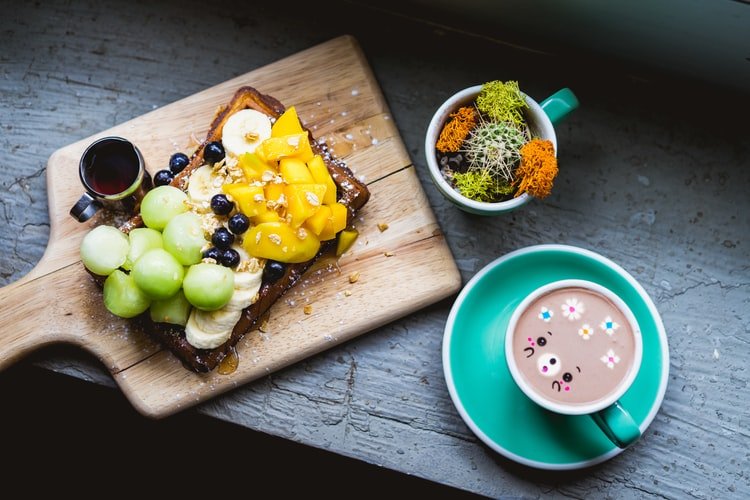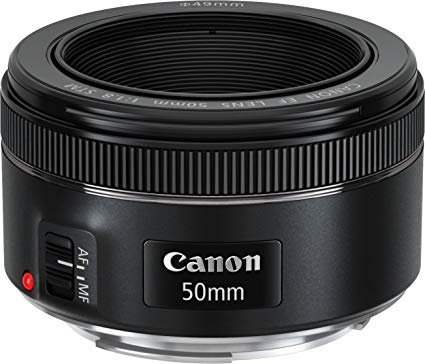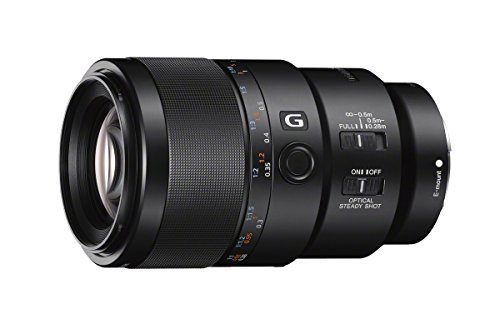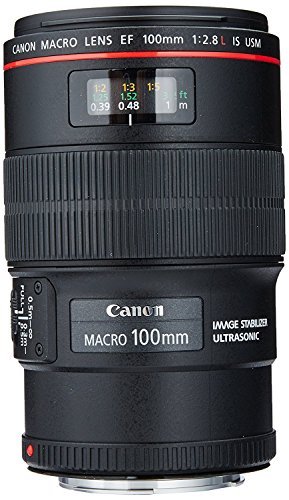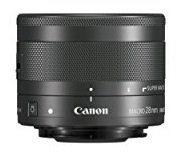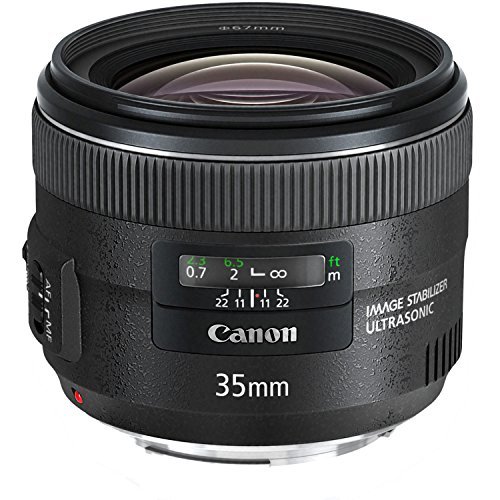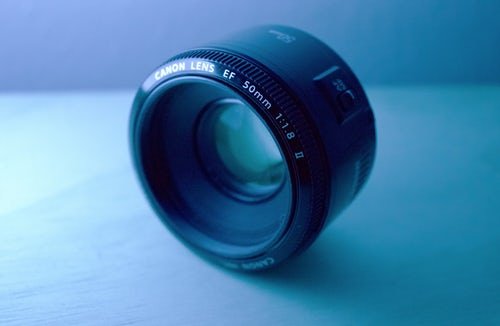In this article, we have reviewed the 10 best lenses for food photography in the market along with a comparison table and a detailed buyer’s guide to help you choose the best lens possible for your needs.
Food photography is a genre of still photography. It takes some really perfect clicks through some of the best lenses to bring about the culinary detail of the dish. The food item of Dish cannot speak for itself neither its Aroma and taste reach the audience on the other side of the picture.
But you can make people savor the flavors of the delicacy through the picture. An amazing standout of food is possible only through the best lens for food photography.
There is true quite a number of factors that determine the best lens for food photography as well as distinguishes it from the lens that is required for other normal still-life photography.
Mostly the point-focus clicking technique is used for the food. Here focusing is only on one specific item with little concentration on the background. Those lovely colorful veggies and dipping sauce from the steak, a vignette shot of the wine bottle, or the curry.
You can make everything look perfect through a proper food picture. Food stylists consider every detail of the dish to make it stand out perfectly in the picture.
Best Lens for Food Photography
1. Canon 50mm Prime Lens
It is like the staple tool in the kit box of every food photographer. It is popularly called the nifty-fifty. The eye-catching advantage of this lens is that it comes at an affordable price. Whereas the disadvantage is that it is a wide-angle lens.
In food photography, precise clicks are mostly required. In such clicks, you don’t want much of the background to interfere with the image. But the 50 mm lens is not going to give you that close shot. Though in this Canon 50 mm lens there is a unique benefit of the crop factor that you get.
This lens is indeed good for some overhead shots and tablescapes. Motion blur is reduced and hence the image is sharper. The aperture is f/1.8. With the use of this lens, you can shoot in natural light conditions, and the necessity for flash usage is reduced. It uses the STM or stepping motor technology.
The advantage of this technology is a steady and continuous focus. Perfect lens coating helps to minimize flare and brings about amazing color balance. There is a sharp focus.
The minimum focus distance is 0.35m. The maximum magnification is 0.21X. The autofocus is superb. The robust and compact body makes it easily portable. The circular 7-blade design is responsible for the minimum blur and sharp images.
The exterior is well-designed with easy ring placement. This makes manual adjustments quite easier. The price is worth paying because you get a lot of features.
So if you are a novice this is probably one of the best lenses for food photography.
- Highly advanced STM technology
- Color balance and less motion blur
- Good for wide-angle shots
- Motion servo autofocus
- Can be controlled manually
- Good for portraits because a lot of background gets filled in the frame. Not much suitable for point shots.
2. Nikon Nikkor 24-70mm Lens
It is a great lens for sharp and clear pictures. In this Nikon lens, the company has kept no room for complaints. It has done so by sweeping away all the problems that its preceding models had. It is extremely durable.
Secondly, it has the unique feature of vibration reduction Stabilization Technology. With the help of this technology, the vibration that is produced while clicking the picture due to the number of mechanical jerks is minimized.
It acts as a kind of vibration absorber, and that is why the picture stands out to be really steady. It uses an f/2.8 telephoto lens. The aperture mechanism is electromagnetic in nature. There is provision for low dispersion and high refractive index.
The pictures shot are free of flare and chromatic aberrations. After shooting the image you can add the effects of a soft blur to it. HD videos can be shot even at low light with no compromise to image quality. It works best when paired with the Nikon Full frame DSLR.
The shutter speed is fast enough to capture the correct moment. Both consistency and control are notable. There is a protective fluorine coat both on the front and rear glass. The minimum focus of 35 mm allows you to take up close and precise shots.
All these amazing features make a lot of food stylists believe that this is one of the best lenses for food photography.
- Vibration reduction technology
- The nonstick glass allows easy wiping away of water or dirt.
- Great image quality with no distortion.
- The highly controlled electromagnetic aperture.
- The minimum focus distance of 35 mm.
- Works best only when you pair it up with a DSLR
3. Olympus M.Zuiko Digital ED 60mm Macro Lens
Most attractive built the lens is completely weatherproof and very sturdy and robust in appearance and functionality. From the name, we can understand that the focal length is 60 mm and the minimum working distance is 7.5 inches. The maximum magnification is 35 mm.
It is a unique example of a combination of elements in lenses the new Olympus 60 mm macro lens uses 13 elements that are assembled composedly to form the lens. There is no doubt regarding the brilliance and sharpness of the picture quality that it produces. The working focus is also amazing.
There is a technology that this lens uses which is the built-in autofocus window. It allows you to shoot even from a distance. The brand name Olympus is enough to signify its quality. It also comes with a long-term warranty period. Pair it up with any of your favorite Olympus cameras.
For food photography, it is advised that you use the 60 mm macro lenses with a crop sensor. With the proper combination of a crop sensor, a 60 mm macro lens can be very versatile. It can act both as a 50 mm lens and a 100 mm lens.
You can get beautiful three-fourth angle view shots. No distortion of the images was observed.
You can use it with full-frame sensors to get better results. Each and every detail and the finest speck of the ingredients can be easily captured with the 60 mm lens. It is one of the best choices for many food photographers.
- Extremely versatile
- You can shoot at various angles
- Focus limit switch
- Not a complete all-rounder. You have to pair it up with a lot of accessories to get the best result.
4. Sony 90mm Macro G OSS Lens
This is a telephoto macro E Mount lens. It has an inbuilt image stabilization system which makes the pictures of the food come out really well and clearly. It has a 1:1 magnification.
With the floating focus technology, all types of aberrations are diminished. You can get a perfect shot of the object whether it is close or at far. It also features the nine-blade circular aperture that is associated with the G lens. There is an extra-low dispersion glass which allows image quality to be quite high.
The new Nano coating Technology greatly diminishes the unwanted light dispersion that interferes with the quality and clarity of the image. The contrast is also superior.
The circular aperture helps to achieve the bokeh effect of blurred background. Astrological lens elements help to maintain a high focus and contrast. The alignment of light rays is maintained to reduce obstructions in the optical path. The size and weight of the lens are quite handy.
There is a fast autofocusing system. The presence of a filter thread helps to use polarized filters. Gyro sensors help in lens-based optical image stabilization. There is also the direct drive focusing SSM for precise focusing. Focus hold button and focus range limiter to improvise internal focusing.
The slide focus ring helps in manual focusing and Super ED glass for precise focusing.
- Nano AR coated
- Dust and moisture resistant
- DDSSM Technology
- Image stabilization Technology
- 9-blade circular aperture
- Multi-coated glass
- The focal length is 135 mm on APS-C as opposed to 90mm on the full frame.
5. Canon EF 100mm Macro Lens
The Canon 100 mm f/2.8 is best suited for food photography. The magnification is indeed macro, which is in the ratio 1:1. The unique advantage of this ratio of magnification is that you get a clear and vivid idea about the image size.
The size of the image that you see in your camera lens and the size of the image, in reality, are almost close. That is why you can have a kind of preview of the image from the lens itself. The lens is versatile but well-suited for still photography.
You can get a shallow depth of field and bokeh with this lens. It uses the inbuilt hybrid image stabilization technology. It uses a 9-blade circular aperture to bring about the bokeh. To prevent chromatic aberrations, ultra-low dispersion technology is used.
This is the first mid-telephoto macro lens by Canon. The quality of the optic is superior.
The Canon 100 mm f/2.8L IS USM is unmatched in quality because of its many modern features. One of these is the near-silent ultrasonic focusing. The close-up capability is amazing. The details come out stunningly beautiful.
The shakes produced during the shifting or tilting of the camera sideways or angles are reduced by the hybrid image stabilization Technology. Inner focusing along with full-time manual focusing is achieved. There are 15 elements in 12 groups that constitute the lens. The minimum focusing distance is 0.3m.
To get a better quality image you can always pair it up with 67mm filters. You can easily use it to shoot even in low light. The building is light and compact. It is adapted for all kinds of weather conditions.
- 100 mm focal length
- 1:2.8 maximum aperture
- Excellent as a close-up lens with life-size close-up capability without an adapter.
- Ultrasonic focusing
- Diagonal angle view of 23.4 degrees.
- A lot of users face issues with the autofocus
6. Nikon PC – E NIKKOR 85mm Tilt-Shift Lens
The name comes from the unique feature of tilt, shift, and rotation during photography. It has a 1:2 magnification ratio. A high expansion of the image is possible with it.
It uses a close-range correction system that is able to produce a better quality of images even with closer working distances. The specifications for movement are as follows:
Tilt lens – +/- 8.5°
Shift lens- +/- 11.5 mm
Mount rotation- 90° left or right
The manual focus lens has two types of coatings. One is the Nanocrystal and the other is the super integrated. These have benefits like minimizing the flare and improving the contrast and sharpness. For out-of-focus elements, there is the 9-blade diaphragm.
It has an F-mount lens format. It is compatible with a number of Nikon cameras. It gives you precise control over the plane of focus. You can make a dish stand out amazingly well by clicking it from a particular angle from which all its element comes out prominently.
The background and extra elements can be cropped out. This is not a very conventional lens for food photography. It is mostly used in other formats like architectural photography.
But if you have the budget and want to experiment with your shots then on the basis of functionality this is definitely one of the best lenses for food photography.
- Great freedom of movement and rotation
- Compatible with the number of cameras
- Great for Close Up shots
- Minimum distortion
- Great control over the plane of focus
- Nonconventional
7. Canon EF-M 28mm f/3.5 Macro Lens
This lens is best suited for Ultra close-up shots. From a single granule of salt to a drop of rich sauce. You can capture everything with this lens that is so hard to get from ordinary photography lenses. It has an amazing autofocus system.
This macro lens has an inbuilt macro lite. This feature helps to capture great details of objects even in dim light. The details captured are quite prominent and bright. It has a magnification of 1.2X.
This is the world’s first lens to have a focus up to infinity. The blur that is produced in the pictures due to shaking can be avoided by the all-new hybrid image stabilization technology that is authentic of Canon. It also uses the stepping motor Technology for the betterment of the image.
For people who wanted to use microlenses but stepped back because of the budget and complication of the usage, this is perhaps the best choice that you can have. The length of the lens is 2 inches which makes it one of the lightest macro lenses. It also helps in the portability and handling of the lens.
The built-in macro lite feature is indeed revolutionary. The front lens comes with extra lightning LED options so that you can always have sufficient light whenever you feel a shortage of it. With the help of these inbuilt lights, you can focus on a small object in a macro way.
In this way, you can concentrate on the small details of the dish while eliminating unnecessary background.
- Extremely versatile
- The revolutionary macro light feature
- Well built and hand at the same time
- Brilliant autofocusing system
- Hybrid image stabilization system
- Lead screw-type stepping motor technology is used
- Only compatible with EOS M Cameras.
8. Fujifilm Fujinon XF 35mm Lens
The maximum aperture of the lens is F2.0. The 9 elements in 6 groups’ image construction help to take some sharp and bold images. It has a focal length of 53 millimeters and an excellent autofocus system.
The traditional stepping motor technology is used such that the images are not blurred or hazy. The exterior body is compact and lightweight. The lens and exterior body both are dust resistant and suited to work in extremes of temperature conditions.
Slim sleek compact design which does not compromise with the style. The lens is a combination of two aspherical lenses. All the parts are usually made of good quality metal which can provide long life and durability to the camera lens.
The inner focusing system coupled with the least time taken for autofocus makes it perfect to be used for capturing snapshots and quick clicks. The Nano GI coating diminishes the ghosting. Well-suited technology for silent operations.
An extremely useful lens hood is supplied along with the lens. This lens hood is light in weight and circular in nature. The function of this lens hood is to prevent the entering of unnecessary light rays from unwanted sources so that there is no interference with the shot.
It has an external diameter of only 60 mm. This makes the lens quite handy for use. You can click images with some really good bokeh features.
- Nano GI coating helps to reduce flayer and unwanted dif
- 9-blade aperture for rich
- 13-inch minimum working distance
- Completely dust resistant and can work in variable weather climates without giving any such troubles.
- Front lens caps and lens hood are provided for protection of the lens.
- This lens is not compatible with full-frame sensor cameras
9. Canon EF 35mm IS USM Lens
The perfect wide-angle lens is compatible with any EOS camera. Stable right and highly clear image quality are associated with this lens. It has the GMO spherical lens element that is responsible for producing bright peripheral images.
The performance of the autofocus system is enhanced by the rear focus technology. The ring-type USM helps with swift autofocus. In the autofocus mode, the manual focusing is also functional. For better shots, a micro-stepping drive is provided.
The use of optical image stabilization Technologies is seen. Auto-switching from normal mode to IAS mode can be easily achieved by the use of this lens. The build of this lens is compact and lightweight. It has an 8-blade circular aperture diaphragm for proper image stabilization.
Ghosting and flare are minimized through lens coating. It has a 35 mm focal length. The maximum aperture is 1:2. The lens is constructed of 10 elements in eight groups. Diagonal angle for views of 63°. Works best with a 67-millimeter filter. The minimum walking distance is 0.24 meters.
The best feature of this lens is that it carries the flagship of Canon. The pictures will definitely come out to be sharp bright and vibrant. You can capture the finest details that are required to make your shot an amazing one.
The autofocus system is rear-managed which makes it easy to handle. This lens has got quite a glamorous and stylish look. Overall, it is one of the best lenses for food photography.
- Quite versatile
- Sweet and compact built
- Image stabilization
- Eight-blade circular aperture
- Microstepping drive
- GMO element
- The vignetting is very heavy.
10. Sony 55m Zeiss Full Frame SONNAR Lens

The main features are Zeiss contrast and high resolution. Full frame E mount body. Internal reflections and vibrant contrasts are diminished by the T * coating. The maximum aperture is f/1.8. The lens is built based on the SONNAR concept.
It helps to have precise control over the depth of the field. The internal focusing is driven by a linear motor system. Focused single shots as well as full-scape backgrounds, both are possible by the use of this lens. The external body is dust and moisture-resistant.
Sony is known for building some most robust and long-lasting lenses and this one is no exception to it. It delivers a smooth consistent performance throughout. The background can be Blurred by the circular aperture lens. The bokeh effect stands out amazingly.
Natural defocusing runs seamlessly through this lens. Spherical aberration is reduced by the use of aspherical lens elements. Advanced aspherical elements create a high contrasting ratio between the center and periphery. The T-star coating is responsible for a high-quality image.
Filter thread in the front of the lens helps with polarized filters. The Swift autofocus system helps to get the perfect point shot. The lens is full-frame and fixed. It is prime in nature. Extra protection front lens cap and rear lens cap are provided. It has a 9-blade rounded diaphragm.
The focal length of the lens is 55mm. The minimum focus distance is 0.50m. The filter that is used has a diameter of 49mm. The magnification is 14X. The battery life is quite good. The high resolution and contrast are an outcome of the extraordinary T-star Carl Zeiss coating.
- Full frame E Mount Prime lens
- Extraordinary T star Carl Zeiss coating
- Front and rear lens caps are provided for glass protection.
- Natural defocusing
- Amazing bokeh effect
- Minimum distortion
- The body is completely water-dust resistant and compatible with working in all weather conditions.
- The lens is fixed and hence non-zoomable.
Buyer’s Guide to Choose the Best Lens for Food Photography:
Here is a Buyer’s Guide that you can always refer to when planning to buy the best lens for food photography.
- You have to know in-depth about the genre of food photography. It is a form of still photography and has certain specific requirements. There is not much requirement for videography in food photography. In the food photography Arena, you need to click pictures of the food, the dishes, the vegetables, the fruits, ingredients, and other equipment related to cooking. You need to understand that in food photography close-up shots are more important. So choose your camera lens according to the requirement.
- When buying the camera lens concentrate on the crop factor. In food photography, you do not need to involve a lot of background details in your frame. So the crop factor of the lens that you buy should be well enough. You must read the details about the crop factor before investing in a camera. The kind of Crop sensors that are used in the lens will help you to have a clear estimate regarding the difference between the size of the camera’s sensor and the traditional film frame.
- Crime or 6 lenses are a very good option for food photography. Prime lenses are sharper than zoom lenses. The depth of field and background can be easily changed with the help of fixed lenses.
- Each lens has its own specific characteristic. Some lenses may be good at shooting close shots while some lenses may be good at clicking wide angles. Accordingly, the images from each of the lenses will also come out differently.
- 50 mm lenses are good for capturing stories, flat lays, and some overhead tablescape shots. You can shoot with the help of this lens in low light because of the maximum aperture range that it provides. If you are a novice and have a tight budget then investing in this lens can be a really good deal. It is an all-purpose as well as versatile lens that can help you to Cater to most of the situations that would arise during food photography.
- A 60 mm lens is good for macro shots. Most food photographers aspire for a lot of macro shots as a part of an experiment with their skills. 60 MM lens can provide you with the opportunity of clicking some really decent macro shots. Comes with cropped sensors.
- 90-105 macro lenses are good for tight crops and macro shots. They are well suited for full-frame operations at 45 degrees angle.
- The tilt-shift lens is good for capturing macro shots from a particular angle.
- The lens that you invest in should be strong, robust, and durable. It should be resistant to mechanical wear
and tear. At the same time, it should be resistant to the settling of Grease dust, and dirt. You should always check before buying whether the lens is suited for operation under all weather conditions or not. - You can also think of buying some really good zoom lenses. With the help of a zoom lens, you can capture the finest details of the image with a lot of Precision. The image stands out to be quite distinct, bold, and vibrant. If you want to try out the different shapes of food photography then you must invest in a zoom lens.
- Autofocus is another feature that you should consider while buying a lens for food photography. You should invest in a lens that has good autofocus properties. It should be able to capture focused images with fast precision.
- Image stabilization is also another feature that counts greatly when buying a lens. There is every possibility that the lens will shake due to the shaking of the hands or tripod while shooting a picture. There is a salient Technology called the image stabilization technique by which the lens itself counteracts the shaking which is produced that could have caused a blurring. You should check that what is the quality of image stabilization that the lens provides before you invest in it. This is very important especially for a novice because there are greater chances of shaking off the camera while clicking.
- Lens offers a larger aperture. It should also provide a shallow depth of field for blurred background. This helps to create a considerable difference in contrast between the background and the actual image.
- The glass should be of high quality and must be encased in a sturdy way.
- It should have a quiet lens motor and ultra-sharp focus. It should work with great precision in all types of light conditions.
- The bokeh effect is another interesting feature that is very essential in food photography. In food photography, the combination of the subtleness of the background and the prominence of the object is required and the bouquet is the key to achieving the perfect balance. So before you invest in the lens make sure it gives you good bokeh effects.
- Invest in good brands the lenses which come under the flagship of trusted companies they use genuine Parts for building the lens. They offer good warranties. There are loads of advantages that you get when you invest in the lens from renowned brands like Nikon, Canon, Sony, and so on.
- Always choose lenses that are compatible with more than one camera.
